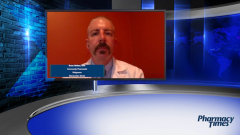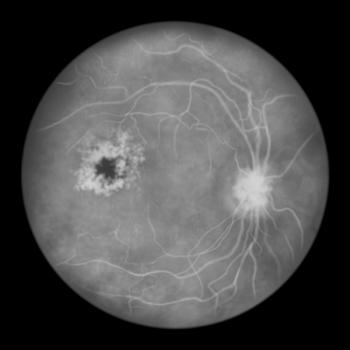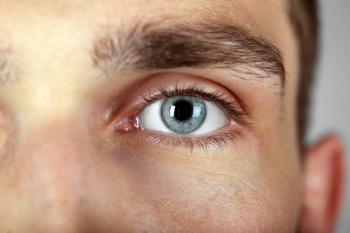
Over-the-Counter Treatment Options for DED
Brian Walker, RPh, elaborates on the over-the-counter treatment options for patients with dry eye disease.
Episodes in this series

Lisa M. Nijm, MD, JD: I think it’s tough sometimes for patients to look for over-the-counter treatments for dry eye disease. There is a whole aisle [of products], and it seems like there are new types of artificial tears all the time and all kinds of different ointments and gels and everything else. How do you guide patients when they ask about these different over-the-counter treatments?
Brian Walker, RPh: When researching this project, my eyes were opened to the myriad and the combinations of products. I don’t want to say, “the confusion,” because it’s also confusing for health care professionals to understand viscosities. The more petrolatum [that a product contains], the more likely that it’s going to be very thick and blur your vision. Where do you go to see which one is in which viscosity range? It is very confusing.
There is the water component of products, and there is an oil component. There are [also] emulsifiers that help mix those two things together because oil and water don’t really want to mix. [There are also] FDA rules on what [constitutes] an active ingredient versus an inactive ingredient. There is a lot of confusion because some active ingredients that are in one product in a specific concentration may be listed as the inactive ingredient in another product, just because it [appears at a lower concentration than] the threshold of what the FDA requires [for an active ingredient].
[I would recommend] artificial tear products first to someone who complains of mild eye dryness—maybe it’s a little seasonal, but it’s not necessarily an allergy or a slight environmental problem. Something that you could use 2 to 4 times a day [includes] Blink, Biotrue, Clear Eyes, Systane, TheraTears, Refresh, Rohto, or Soothe by Bausch + Lomb. Those are products that are going to be thinner or liquidy. They can be put in while a person is driving or wearing contacts. A lot of [their package labeling says] that [these products] haven’t been studied in people wearing contacts, but most manufacturers say that they have been proven to be safe for contact [lens] wearers.
Many manufacturers also have preservative-free options. Most come as single-dose or single-use vials. Many times, patients see the cost of those, and they only use 1 or 2 drops and then try to save it. [These people must be told that] these products are for single-use only and [should not be kept]. Ideally, preservative-free products should be used for people with moderate-to-severe dry eye, as well as those with glaucoma, [since] some preservatives can damage the corneal nerve.
An exception is the Optase dry eye drop. It’s a little expensive, but the manufacturing container doesn’t let air back in after the drop is released, so it can be kept for 3 months. There is also Nature’s Tears spray. I’m not a big fan of spraying any aerosol into the eye, but [this is an aerosol formulation to be sprayed] 8 inches or more away from your eye. It is just a cell culture-grade water that is pH balanced, so it’s not going to cause any stinging.
Then you have a thicker product for people who say, “Oh, I’ve tried the tears product, and I need something a little stronger.” You have GenTeal or Refresh that contains gels, and those really just have [ingredients] that are in higher concentrations than the regular tears products. It’s got a higher concentration of the thickener and lower concentration of water to make it more of a gel product. As you increase viscosity, however, you increase the possibility of blurriness or a little bit of vision loss at first by putting in those drops. Then you have ointments, which are more or less Vaseline or highly purified petrolatum products or mineral oil. Those will definitely cause blurry vision and are marketed [to apply] in the evening after a long day of computer use. They last a whole lot longer than a regular tears product would.
There are some exceptions. We’re talking about educating patients, as well as health care professionals, about over-the-counter eye drops. There are instances when, even within the same manufacturer, active ingredients are listed in the same exact quantity and concentration [for different products. For example,] Systane and TheraTears have identical products, and Systane Complete and Systane Balance have exactly the same active ingredients. The difference really is in the inactive ingredients that make it more pH balanced or [effective] slightly longer. You have to understand that the inactive ingredients play a really big role.
There are some products that are marketed specifically for people who are on a computer, such as Rohto Digi-Eye and Refresh Digital. Digi-Eye contains the decongestant tetrahydrozoline to get the red out in addition to the cellulose derivative hypromellose. Refresh Digital doesn’t contain a decongestant; it contains carboxymethylcellulose, liquid glycerin, and the emulsifier polysorbate 80. We all remember Visine as being the product that came out first to reduce redness. [That brand] has a dry eye-relief product that doesn’t have the decongestant like the older, original Visine. You have to grab the box, look at the active and inactive ingredients, and kind of help guide the patient because there is a lot of confusion about just the regular product name.
Transcript edited for clarity.
Newsletter
Stay informed on drug updates, treatment guidelines, and pharmacy practice trends—subscribe to Pharmacy Times for weekly clinical insights.











































































































































































































